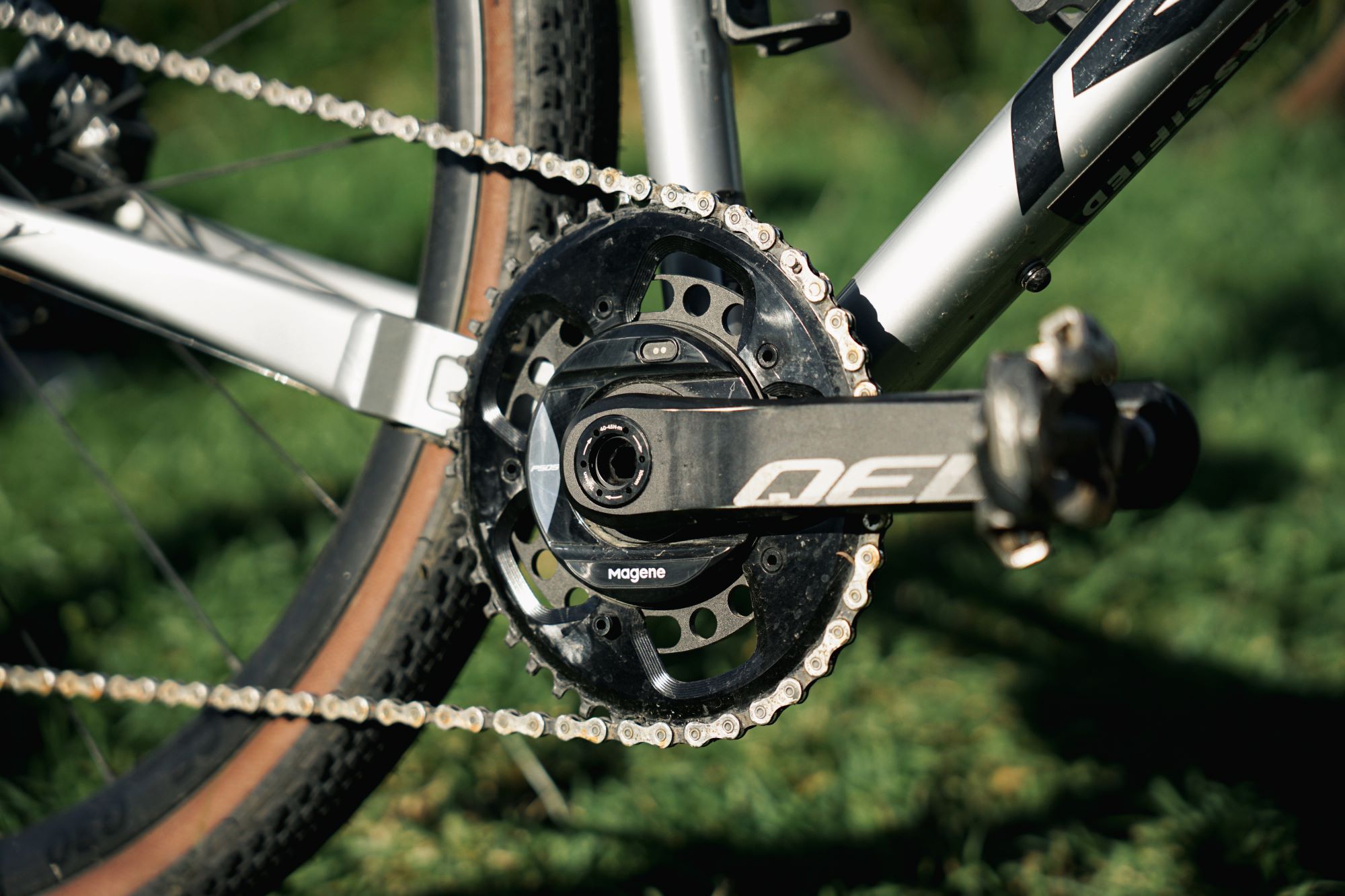Words: Lester Perry
Images: Jakob Lester
With the rise and rise of power-based training over recent years, we have also seen a rise in the number of power meters on the market. Long-established players and their exorbitant purchase prices are still in the game, but their dominance is being challenged by lesser-known, more affordable brands. As the price gap has widened, the performance gap is closing, and some of the newer, more affordable players now offer comparable accuracy and stability to those of the established old guard.
Just a handful of years ago, it appeared that the days of the Spider-based power meter were numbered. The market was flooded with crank arm-based options, but almost as quickly as they arrived, most of these new kids on the block were gone, buried under a pile of returned faulty units. While most of the crank-based power meters remaining in the market are pretty good, they generally still lack spider-based meters’ reliability and longevity.
Magene launched in 2015, soon after launching their first product, a wheel-off stationary trainer. Since then they have filled out a complete line of trainers, lights, computers and some curious e-bike tech. Although they don’t explicitly say it on their website, or anywhere else I can find, it sure appears Magene is the house brand of a factory manufacturing for multiple other brands (that’s a good thing).
Magene products are readily available from international websites, but now, with an NZ distributor and dealer network, buying locally offers some reassurance that if something goes wrong, you can get support.

Compatibility:
The P505 is compatible with multiple 4-arm and 5-arm 110BCD chainrings, and there’s even a version for the SRAM 107BCD 4-arm chainring. In my case, we had an Absolute Black oval chainring fitted.
Versions of the power meter are available to suit SRAM 8- or 3-bolt systems or Rotor Cranks and can run on a Shimano bottom bracket setup with a Magene Crank and compatible spindle. We haven’t been able to test how the spider runs with a traditional 2x chainring setup. I can’t see any reason it wouldn’t work as it should, but it’s worth keeping in mind.
The unit has an IPX7 waterproof rating, meaning it can withstand being immersed in 1 meter of water for up to 30 minutes. Needless to say, it will manage a few hours in the rain or even immersion while crossing a stream.
Connection and calibration:
Connecting the P505 to my Garmin 530 Edge was as simple as it can be, in my case via ANT+, but Bluetooth is also available. Once connected, I haven’t had any dropouts or connection issues. The same goes for calibration; it’s worked like a charm every time. The unit auto-calibrates while sitting stationary or can be manually calibrated via the Magene APP, a Zero-Reset on a bike computer, or by pedalling in reverse five times. Over the years, I’ve had multiple issues with different power meters failing to calibrate correctly but haven’t struck any worries with the Magene.
The power meter charges via a magnetic cable that snaps in place on the contacts. There are no plugs anywhere that may allow water ingress. Magene claims a 200-hour run time on the battery. Unfortunately, I haven’t managed 200 hours on it, so I can’t dispute this. I’d imagine even if you’re cranking out 20-hour training weeks, it’s going to last a while!

Data Collection:
The P505 power meter data feed offers Power, Cadence, Left-right Balance, and Pedaling Smoothness. From what I can figure out (there’s not a ton of literature around), the L-R Balance and Smoothness numbers are calculated by running power data through some fancy algorithms rather than measured directly with strain gauges, so if there were to be any inaccuracy anywhere, I’d say either of these areas would be where it may arise. In fairness, I haven’t found anything odd here.
Accuracy and consistency are two critical measures with any power meter. Magene claims +-1% accuracy, and from what I can tell, this is consistent – no obvious power drop-offs or ramp-ups to be seen over my rides. Compared to my Elite Direto XR-T, the power is almost identical, with only a tiny variance occasionally.
Crankset:
As you’d expect, the QED crankset matches the P505 Powermeter perfectly. Visually, its arms are not too dissimilar from another familiar brand; I guess the old saying “imitation is the highest form of flattery” applies here. The QED has a SRAM ‘Dub’ style spindle, although a Shimano-compatible version is also available. The arms are certainly stiff and have a sturdy, positive feel during all-out sprints. My only question on the cranks is – if they come loose (hey, it happens) at some point while out riding, would you have the required 10mm Allen key to tighten them? I thought not.
Multiple crank lengths are available: 165mm, 167.5mm, 170mm, 172.5mm, and 175mm. With the move towards running shorter cranks, if you were considering trying something different, this could be an affordable way to get not only a new crankset but also a power meter.
The P505 in use:
I’ve been running a gravel bike with the Magene P505 meter on the Magene QED crankset for about a month now, and I’ve all but forgotten about it while riding. I mean that in the best possible way. I’ve been trying to find issues, but I’ve had none. The connection hasn’t ever been an issue; I just turn on my Garmin and go. There have been no data dropouts while in use, and even after surveying ride power graphs, I can’t find anything to fault. Even rough tracks and gravel roads haven’t perturbed the P505.
When I first saw the Magene power meters, sometime before receiving one for review, I’ll admit to being pretty sceptical, and I honestly didn’t take a second look. These days, it’s fair to say there are some really good products coming from “off-brand” companies. Although we may not be familiar with their names, they have a wealth of knowledge and manufacturing prowess behind them. In my thinking, Magene is one of these.
A month in, if I were in the market, I’d happily shell out my own cash for a P505. The actual test of its value would be told in six months, a year, or even two, but so far I see no reason it won’t last for many years of power measuring.



